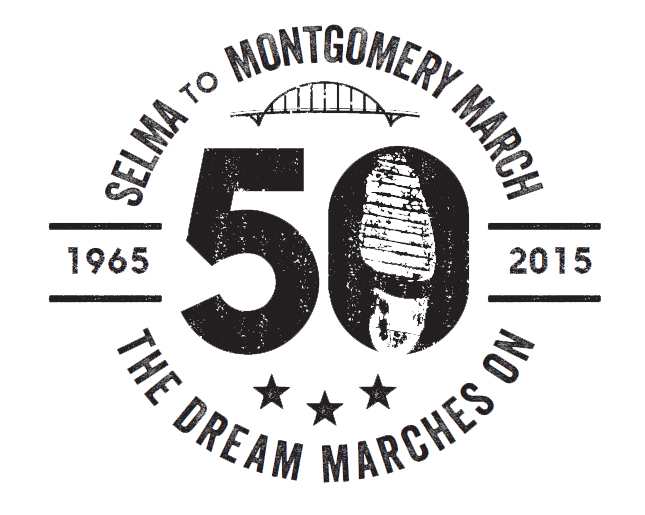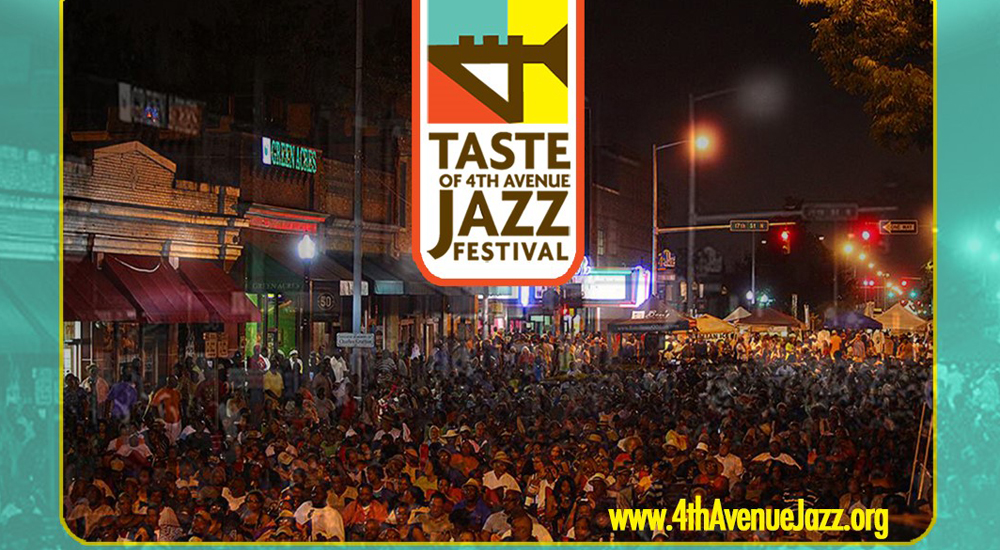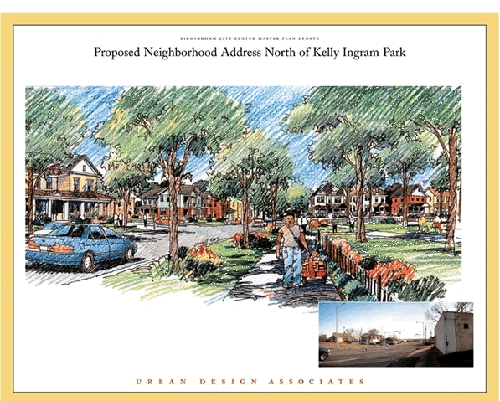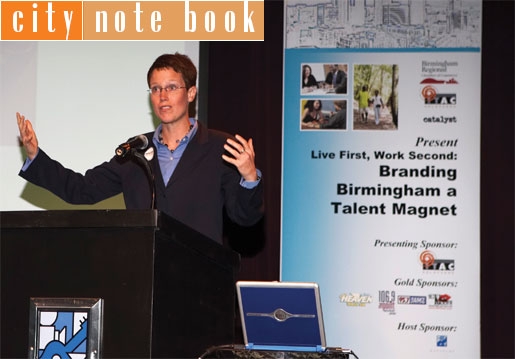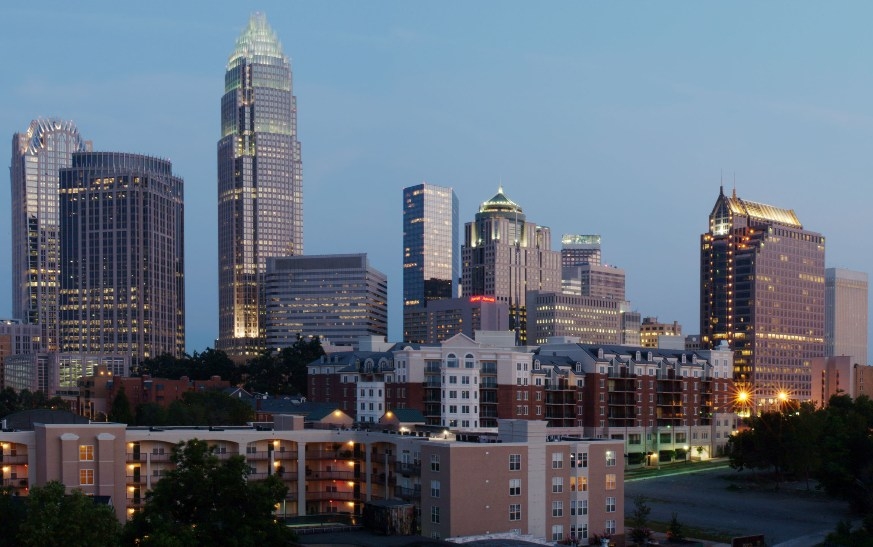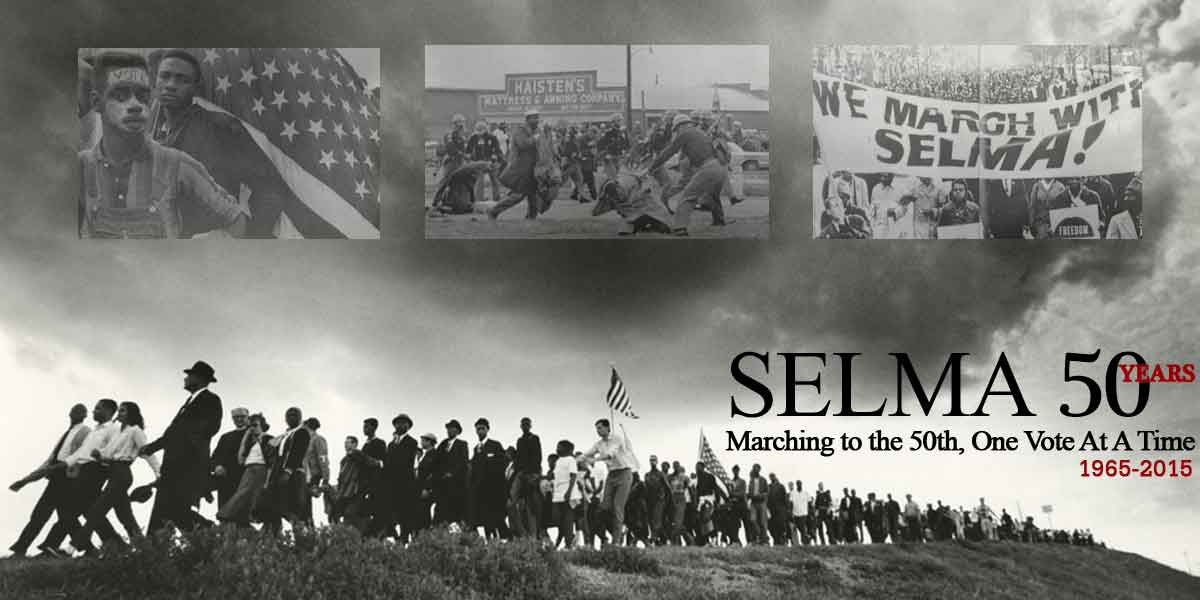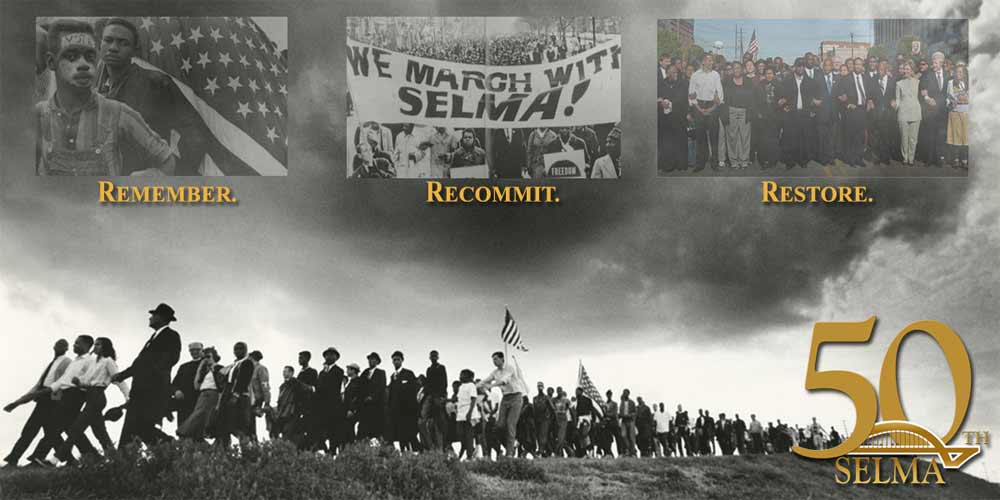Pittsburgh consultant Don Carter stood center stage at the Alabama Theater in October before a crowd of more than 100 Birmingham citizens. They’d skipped watching the World Series historic game between the Red Sox and the Cardinals, wanting instead to see Urban Design Associates unveil the almost-final version of a Master Plan for the City Center.
Over the next 10 years, Carter says, Downtown Birmingham could see:
- Thousands of new loft apartments, condos and rental units in new City Center urban residential districts;
- Hundreds of new single-family homes, many of them affordable, in the nine historic neighborhoods that border the business district;
- An expanded UAB campus and related biomedical and high-tech businesses to support the university’s world-class medical and other researchers;
- Thriving theaters, restaurants and other attractions – at Third and Fourth Avenues North, in Lakeview, and around the expanded Civic Center complex – that attract diverse citizens and visitors;
- A new central park for Birmingham, the Reservation Rail Road Park, the crown jewel of urban green space on a spot that currently resembles an industrial rustbelt.
“This is the vision for the City Center of Birmingham,” Carter says, concluding his nearly hour-long address.
The plan still has to be tweaked, adding some last-minute touches based on comments made after the presentation. And, Carter adds, further studies would be needed to ensure that some of the long-range plans – like taking the raised Interstate 20/59 roadwork down into a below-ground roadway – can actually be accomplished.
In the end, Urban Design Associates and Birmingham Mayor Bernard Kincaid, who enthusiastically supports the proposal, will present the final Master Plan to the City Council. Once council members and other planning officials give it their blessings, the plan is supposed to guide the City Center’s development during the next 10 years.
But some aren’t necessarily waiting for that day to come.
Operation New Birmingham, which has the growth and development of Downtown as its central focus, has a charge from both the City and Jefferson County to begin work with businesses, developers and citizens to continue or start implementing aspects of the plan.
The City Center Master Plan
The Master Plan UDA unveiled helps Birmingham better understand what kind of city it is now and what sort of city it can become, Kincaid tells a group of business and community leaders at a recent ONB breakfast meeting. “(The Plan) gives us an ideal look at what we want to be. Now we have to determine how we want to get there.”
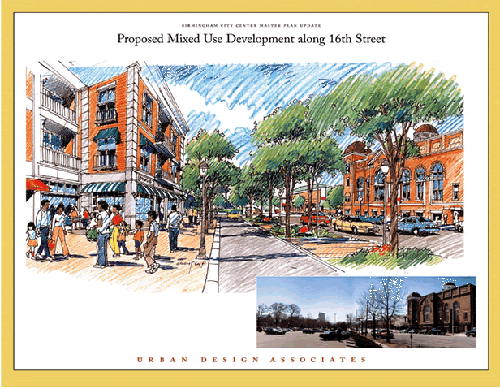
ONB Executive Director Michael Calvert then unveiled a campaign called “Implementation Now,” an effort to raise $4.5 million to help ONB fulfill its new mandate. The City and the County together has committed half of the total amount. Kincaid has asked the private sector to raise the remainder.
“Let’s band together behind Mike Calvert and Operation New Birmingham, and take this City Center – which belongs to all of us – and let’s move the “Implementation Now” Plan for the City of Birmingham,” Kincaid tells the crowd.
Private businesses have pledges to pull $1.55 million of the $2.25 million of the total amount for ONB’s Implementation Now campaign, as of mid November.
Carter of UDA said it will take this kind of public/private partnership to make this plan work. “There’s no point in spending public money if there isn’t going to be private investment,” he says.
Taxpayer money from governments, along with federal tax credits and other financial incentives, have helped jump-start the loft development ripple in Downtown. Developers and other believe the ripple will turn into a swell, and – if UDA’s projections are right – into a future tidal wave of urban living in the City Center.
Case in point: Leo Ticheli used this reasoning to convince his brother Ed – who’s done loft developments in New York — about opportunities to do the same in Birmingham. The Tichelis and their partners intend to convert several abandoned Downtown buildings into loft apartments and condos.
The City and agencies like ONB can grease the skids not only for loft developments, but for developments of all sorts in the areas id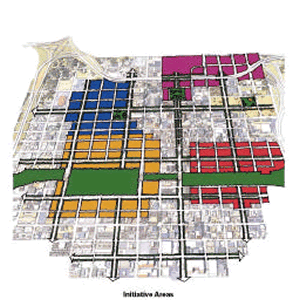 entified as growth initiative areas in the City Center.
entified as growth initiative areas in the City Center.
Main Districts
The Master Plan breaks the City Center into four main initiative focal areas:
- The Civil Rights District (in blue), where the plan calls for increased residential developments, such as the parking lot across from the historic Sixteenth Street Baptist Church.
- The Technology/Cultural District (in orange), where high-tech and biomedical businesses can thrive, especially in close proximity to the University of Alabama at Birmingham. It’s also home to the historic Alabama, Carver and Lyric theaters, which have been or will be restored. The area is also home to more and more restaurants.
- The Loft/Design District (in red), where most of the loft developments have been centered, and more creative and design businesses, such as architects, graphic artists, lawyers and other businesses tend to cluster.
- The Civic Center District (in purple), where the proposed expanded Birmingham-Jefferson Convention Complex (a.k.a. “domed stadium”) will also feature an entertainment district with shops and restaurants for Downtown workers as well as out-of-town visitors. Several new federal buildings are already under construction in the area.
The Master Plan also calls for taking down Interstate 20/59, which acts as a barrier between the BJCC district and the rest of Downtown. Putting it in a below-surface roadway would allow the creation of a landscaped, pedestrian connection between the Museum of Art and the BJCC district.
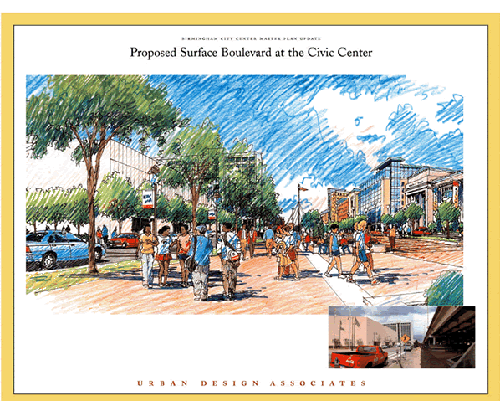
The four major districts could be tied together through landscaped “green streets,” major thoroughfares in the City (including one-way streets that have been turned into two-way streets) such as Sixth Avenue North, 14th Street, 20th Street. These streets would connect to other key green streets in the surrounding City Center neighborhoods.
At the center of the plan is the proposed Railroad Reservation Park. A group of citizens has been dreaming, and working, to turn the industrial area from 14th Street on the west to Sloss Furnaces in the east into a premier park not only for the City, but the region.

“The green streets touch all those areas, and the Railroad Reservation Park is the gem in the middle,” says Carter.![]()


